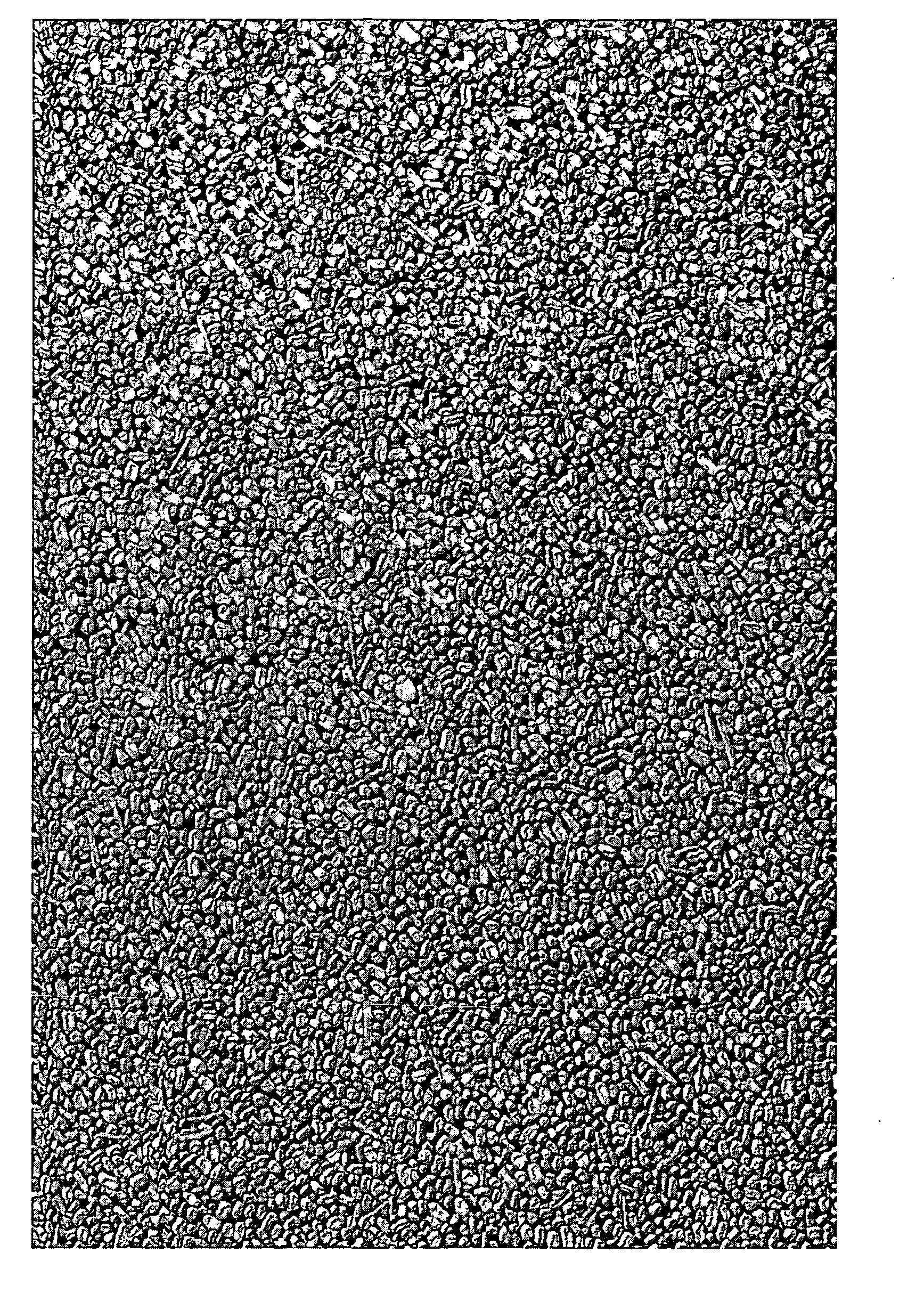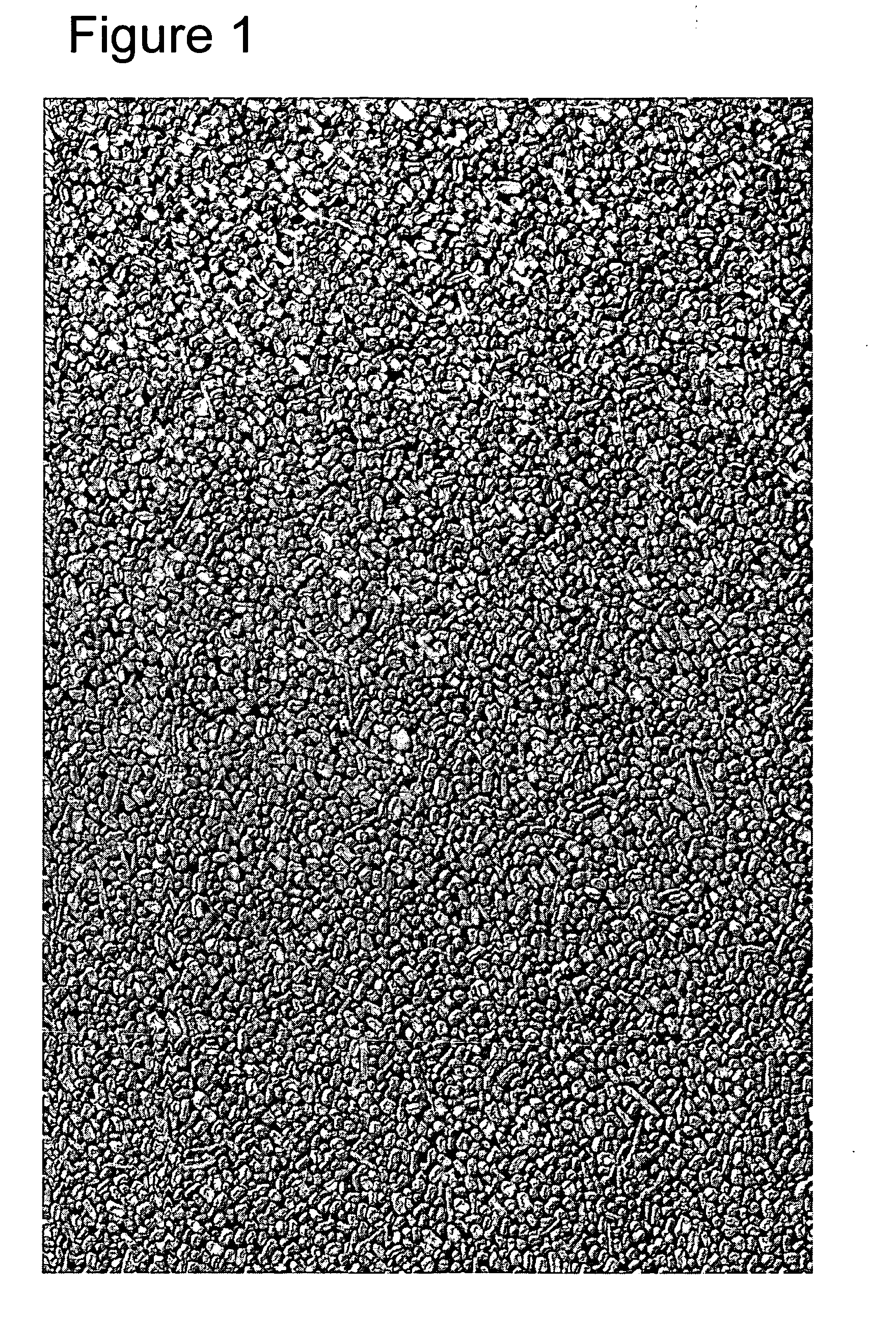Low friction particulate coatings
a coating and low friction technology, applied in the field of low friction coatings, can solve the problems of affecting the accuracy of stent placement, and the translation of stent movement within the catheter to be erratic and imprecise, so as to reduce the frictional force associated with movement and reduce the push force
- Summary
- Abstract
- Description
- Claims
- Application Information
AI Technical Summary
Benefits of technology
Problems solved by technology
Method used
Image
Examples
example 1
[0143]Ten centimeter pieces of 3 mm diameter Pellethane™ EG-60D polyurethane rods were wiped with propanol to clean. A working solution of 20% by volume polycarbodiimide (Carbodilite™ V-02-L2 from Nisshinbo Chemical, Japan) was prepared by diluting a 40% stock solution with propanol. The pieces were dipped into the working solution at a rate of 1.5 cm / second, left to soak for thirty seconds, then pulled out of the solution at a rate of 1.0 cm / second. After a fifteen minute air dry, the pieces were dipped into 30% solids PTFE particles (Dispersez™ 200W2 from PolySciences, Inc.) at 2.5 cm / second into the solution, left to soak for ten seconds, then pulled out at 1.0 cm / sec. All pieces were milky white in color after this coating. The pieces were allowed to dry at room temperature for twenty hours to cure the reaction between the carbodiimide and the grafted acrylic acid groups on the PTFE particles.
[0144]After curing, the pieces were placed in a stirring water bath to see if coating w...
PUM
| Property | Measurement | Unit |
|---|---|---|
| diameter | aaaaa | aaaaa |
| diameter | aaaaa | aaaaa |
| diameter | aaaaa | aaaaa |
Abstract
Description
Claims
Application Information
 Login to View More
Login to View More - R&D
- Intellectual Property
- Life Sciences
- Materials
- Tech Scout
- Unparalleled Data Quality
- Higher Quality Content
- 60% Fewer Hallucinations
Browse by: Latest US Patents, China's latest patents, Technical Efficacy Thesaurus, Application Domain, Technology Topic, Popular Technical Reports.
© 2025 PatSnap. All rights reserved.Legal|Privacy policy|Modern Slavery Act Transparency Statement|Sitemap|About US| Contact US: help@patsnap.com


